In 1962, as Stan Lee continued dreaming up the ideas that would eventually comprise the core of Marvel's pantheon, he began to look beyond the science-fiction background that produced the space explorers of the Fantastic Four, the Jekyll & Hyde monster known as the Hulk, and the incredible shrinking Dr. Henry Pym. Instead, he turned to the more ethereal realm of mythology, but rather than relying on the well-worn gods of the Greek pantheon, he looked to the land of the ice and snow…Scandinavia, from whence Norse mythology sprang. And who else was fit to join Marvel's fledgling pantheon of heroes but the most famous Norse god of them all; Thor, God of Thunder! Joined by artist Jack Kirby, and Stan's brother Larry Lieber who scripted the early issues, Marvel Comics' Thor was born.
The original conception of Marvel's Thor was that of an ordinary man (Dr. Donald Blake) who was merely gifted with the power of Thor, much like another publisher's hero, Billy Batson, AKA Captain Marvel, was gifted with the power of the gods by the wizard Shazam. However, as time went on, more and more of Thor's Norse roots were added, and it was eventually established that he was indeed the true God of Thunder (with Blake being nothing more than a false identity). As writers are wont to do, however, much creative license was taken, to the point where there is a great deal of departure from the original Norse myths that Marvel's Thor is based on. So, in honor of Thor's upcoming film, we're going to take a look at some of those key differences right now, in Thor, his supporting cast of Norse deities, and the mythology that surrounds them.
Thor vs. Thor
We begin, of course, with the God Of Thunder himself. Marvel's Thor has long, flowing golden locks, and is typically clean-shaven, while the Thor of Norse myth was noted for his red hair and beard (writer Roy Thomas gave a tip of a hat to this discrepancy when he introduced Red Norvell, who served for a time as a substitute Thor). Marvel's Thor flies through the air by whirling his hammer Mjolnir (which in the Marvel Universe is made of the near indestructible substance known as uru, created by Larry Lieber), while the Norse Thor prefers to travel in style, via his chariot drawn by the fierce goats Toothgnasher and Toothgrinder. Marvel's Thor may have the edge in raw power; Norse myth indicates that Thor needed a magical belt and gloves to give him the strength to wield Mjolnir to its full effect, whereas Marvel's Thor has only occasionally used those items as strength-boosters. Both Thors are ladies' men, with Marvel's Thor counting the mortal nurse Jane Foster and the Asgardian goddess Sif among his loves, but the Norse Thor seems a bit looser, having married Sif, and yet still carrying on torrid affairs with the likes of the giantess Jarnsaxa. In addition, we have only seen Marvel's Thor spawn offspring in alternate futures, whereas the Norse Thor is the proud papa of at least three children from his various affairs. Their differences also extend to their personalities; Marvel's Thor is a noble hero any of us would feel safe around; the Thor of Norse myth is a fierce warrior with a violent temper, who seems to revel in the slaughter of any who would challenge him.
Odin, The Happy Wanderer
What of the father of the gods, Odin? Marvel often portrays him as a regal, aloof figure, who hands down his wisdom from on high. The Odin of Norse myth was much more of an enigmatic figure, a practitioner of sorcery, something which was viewed with suspicion in Scandinavian culture. The Norse Odin often took on other identities, travelling among men either to learn or to teach. Handing down lessons, often by putting Thor through some tribulation, is a pasttime both Odins share. The Norse Odin is regularly depicted as missing an eye, having sacrificed it to gain knowledge of magic, while this is not consistently a part of the Marvel portrayal. Other aspects of the Norse Odin which are only referenced sporadically in the Marvel comics include his mystical spear Gungnir, his eight-legged horse Sleipnir, and his talking ravens, Hugin and Munin.
Loki, Evil Genius or Misunderstood?
The Loki of Marvel Comics is typically portrayed as an out-and-out villain, constantly scheming to take down Thor, and seize the throne of Asgard. The Loki of Norse myth is a more complex figure, and his role might best be described as "troublemaker." At the outset, he often accompanies Thor and the other Norse gods on their adventures, and often plays a helpful role, many times coming across as craftier than the rest, who depend on his tricks to get them out of trouble. Unlike in the Marvel comics, he is not the adopted son of Odin; rather, they are sworn blood brothers, despite Loki's roots with the Asgardians' foes, the giants of Jotunheim. The key turning point for Loki comes when his mischief-making gets carried away, and he plays a key role in the death of Odin's beloved son Balder (Marvel fans will note that Balder is alive and well in the comics). This creates a rift between Loki and the Asgardians that will eventually lead to Loki turning fully against them, and fighting on the side of their enemies during Ragnarok.
From The House of Ideas
Then there are those Asgardians who really have no place in Norse myth, and wound up a part of the Marvel mythos essentially because Stan and Jack said, "Hey, wouldn't it be cool if…?" These include Amora The Enchantress, Skurge the Executioner, and The Warriors Three. Although The Warriors Three don't find their roots in Norse myth, they DO have literary inspiration, most notably in the form of The Three Musketeers. Additionally, Stan Lee had individual notable figures in mind when coming up with the Warriors; Fandral The Dashing, the swashbuckling swordsman, fit the mold of swashbuckling actor Errol Flynn; Hogun the Grim matches the brooding intensity of a young Charles Bronson; and Volstagg The Voluminous serves as a stand-in for Falstaff, the Shakespearean buffoon (this should come as no surprise, given Stan Lee's love of Shakespeare and his use of elements of The Bard throughout his Marvel Comics tenure).
What in The Nine Worlds?
Any god needs a suitable home, and the Norse gods, or "Aesir", have it in the form of the heavenly kingdom of Asgard. In both Marvel Comics and Norse myth, Asgard is connected to Earth (referred to as Midgard) by a bridge called Bifrost, which manifests as multicolored arc in the sky. Like any good myth, this serves to explain a natural phenomenon, in this case, the rainbow. Asgard and Midgard are not the only two worlds of the Norse cosmology however; traditional holds that there are 9 such worlds in total, though what the other 7 are can vary from myth to myth. Commonly mentioned in both traditional myth and the comics are Jotunheim, the land of the giants; Muspelheim, the home of the fire demon Surtur; Niflheim, home of the ice titan Ymir (in Norse myth Ymir was slain by Odin and carved up to create the Earth, but in the comics he is a recurring threat); Svartalfheim, home of the dark elves (and in the comics, Thor's enemy Kurse); Nidavellir, home of the dwarves (who forged Mjolnir); and Hel, ruled by the eponymous Hel (known as the villainness Hela in the comics, but in Norse myth, more of a neutral overseer of the realm of the dead, which bears no resemblance to our concept of Hell).
One important world of Norse myth that is rarely seen in the comics is the realm of Vanaheim, which was a realm of rival gods known as the Vanir. The Vanir weren't evil (at least not any moreso than the Aesir); they were simply competition, and in the brutal world of ancient Scandinavia, wars were usually fought simply to take over somebody else's lands and resources. This is what the Aesir did to the Vanir, either killing them, or subsuming them as part of their own culture. This isn't a very heroic or noble portrayal by our modern standards, which is probably why the Vanir and Vanaheim are not often referenced in Marvel Comics.
Ragnarok 'n Roll
And now we come to the end… literally. Ragnarok is the Norse version of the Apocalypse, the time when a cataclysmic final battle occurs and the world as we know it will be destroyed. There are variations on the tale from several different sources, but most accounts agree that it is a time when the many enemies of Asgard gather to invade, and the gods fight a bloody battle which results in most of them being slain. Loki, who has been imprisoned and tortured for his crimes, escapes his bonds, and joins the invasion of Asgard. Odin faces off against the monstrous Fenrir wolf, and is swallowed whole. Thor manages to slay the Midgard Serpent, but also succumbs to the serpent's venom. At the same time, our own world suffers multiple catastrophic natural disasters and humanity is virtually wiped out. Eventually, the battle comes to its conclusion, but all is not lost. A few gods do survive, and even two humans, who are foretold to repopulate the world.
Ragnarok has been portrayed a number of times throughout Thor's history at Marvel, most notably in Thor #128, the conclusion of Stan Lee and Jack Kirby's Odinsword Quest storyline. But given Thor's role as a valuable franchise for Marvel, Marvel's Ragnarok has never quite been the final showdown that it is in Norse myth (though it has been used on occasion as a reboot device). One interesting footnote to this is that Kirby's portrayal of Ragnarok in Thor #128 synchs up nicely with his introduction of the New Gods over at DC, a race of, well, new gods, who sprang up after the destruction of an older pantheon. This is because the New Gods were originally intended to be Kirby's revamp of the Thor franchise, but for various reasons, it never happened. It does make one wonder though…what if?
E-mail Matt Adler with questions or comments.
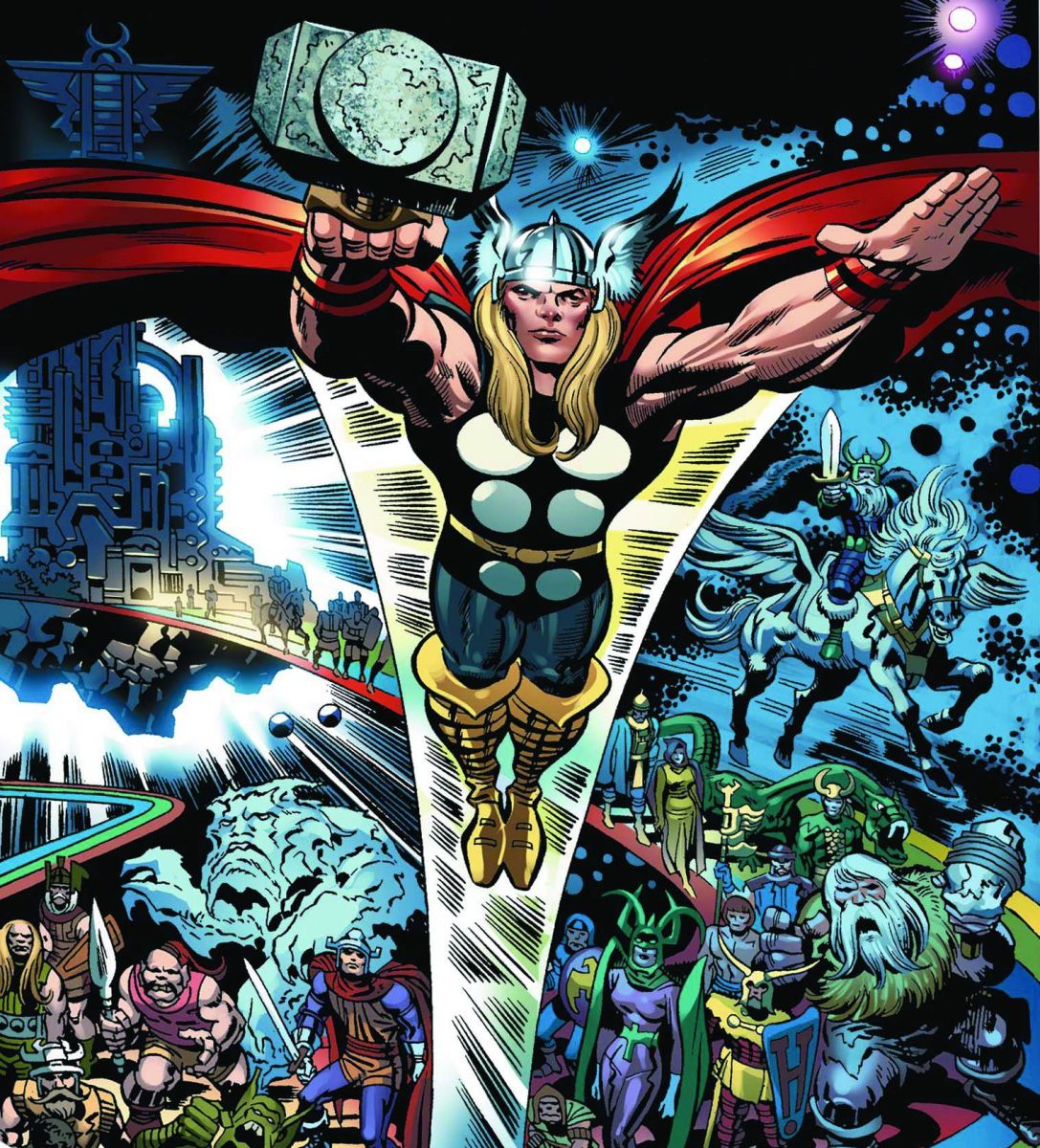
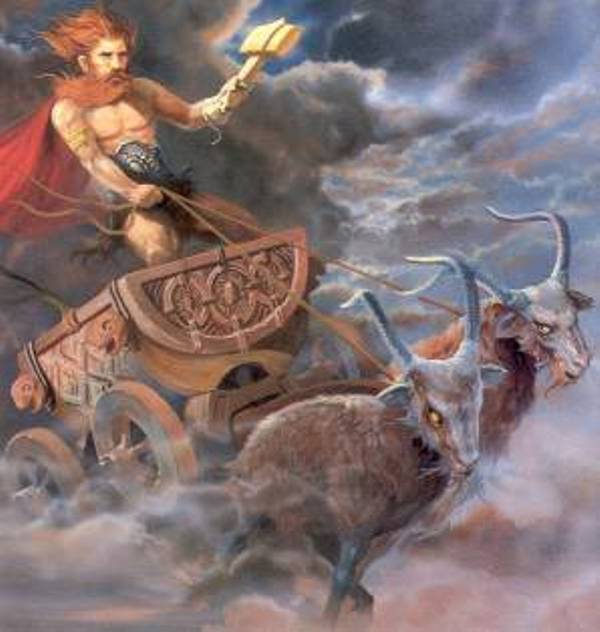
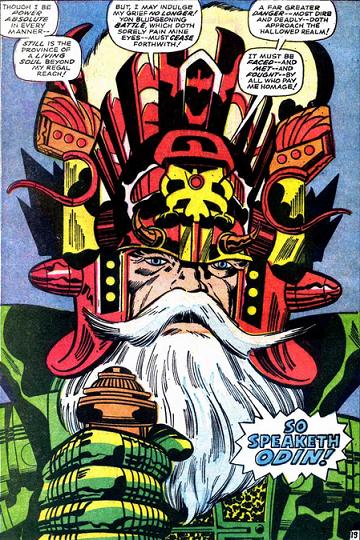
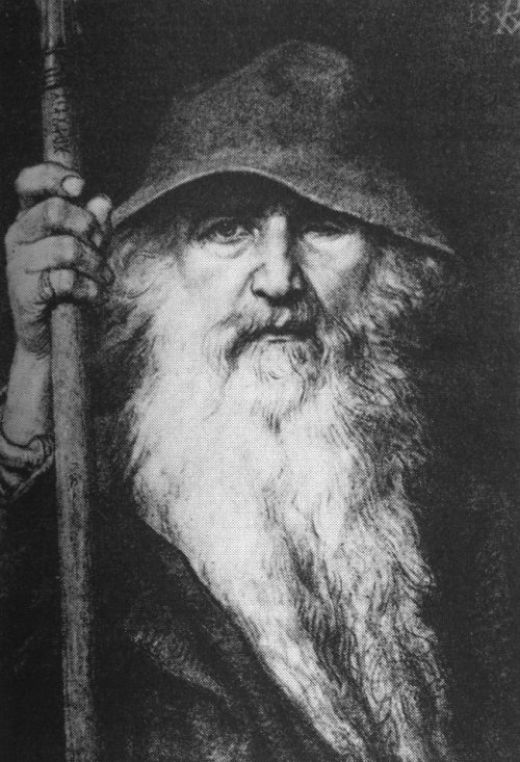
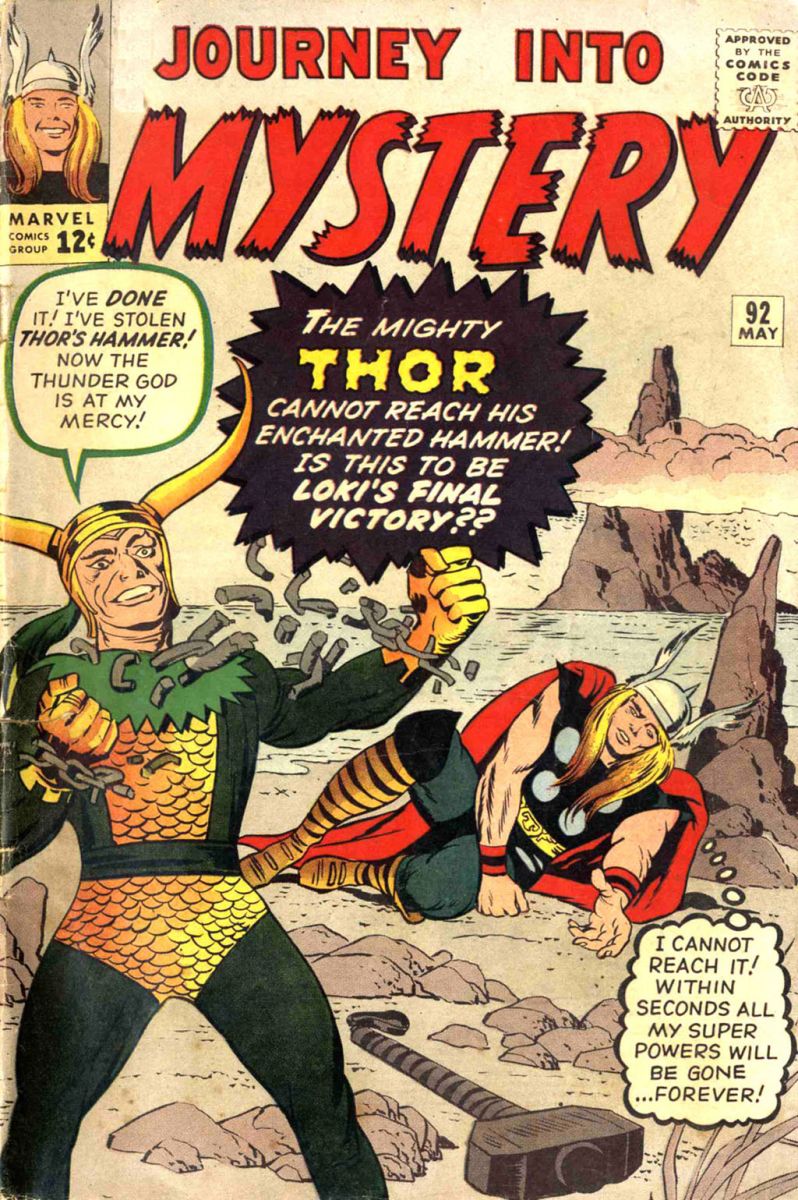
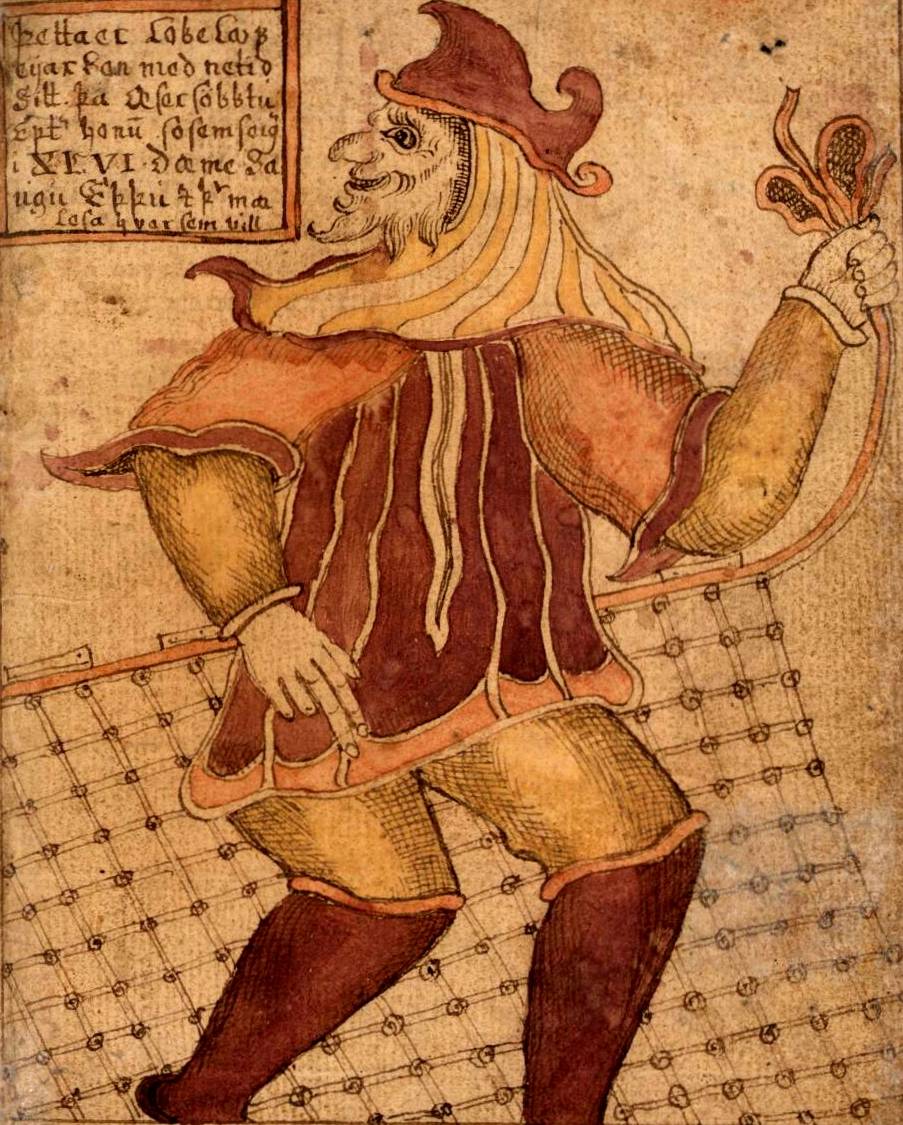


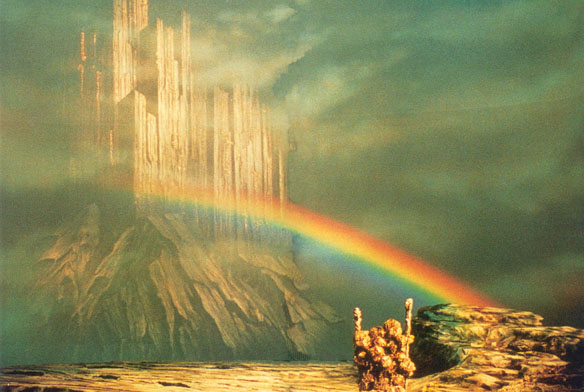
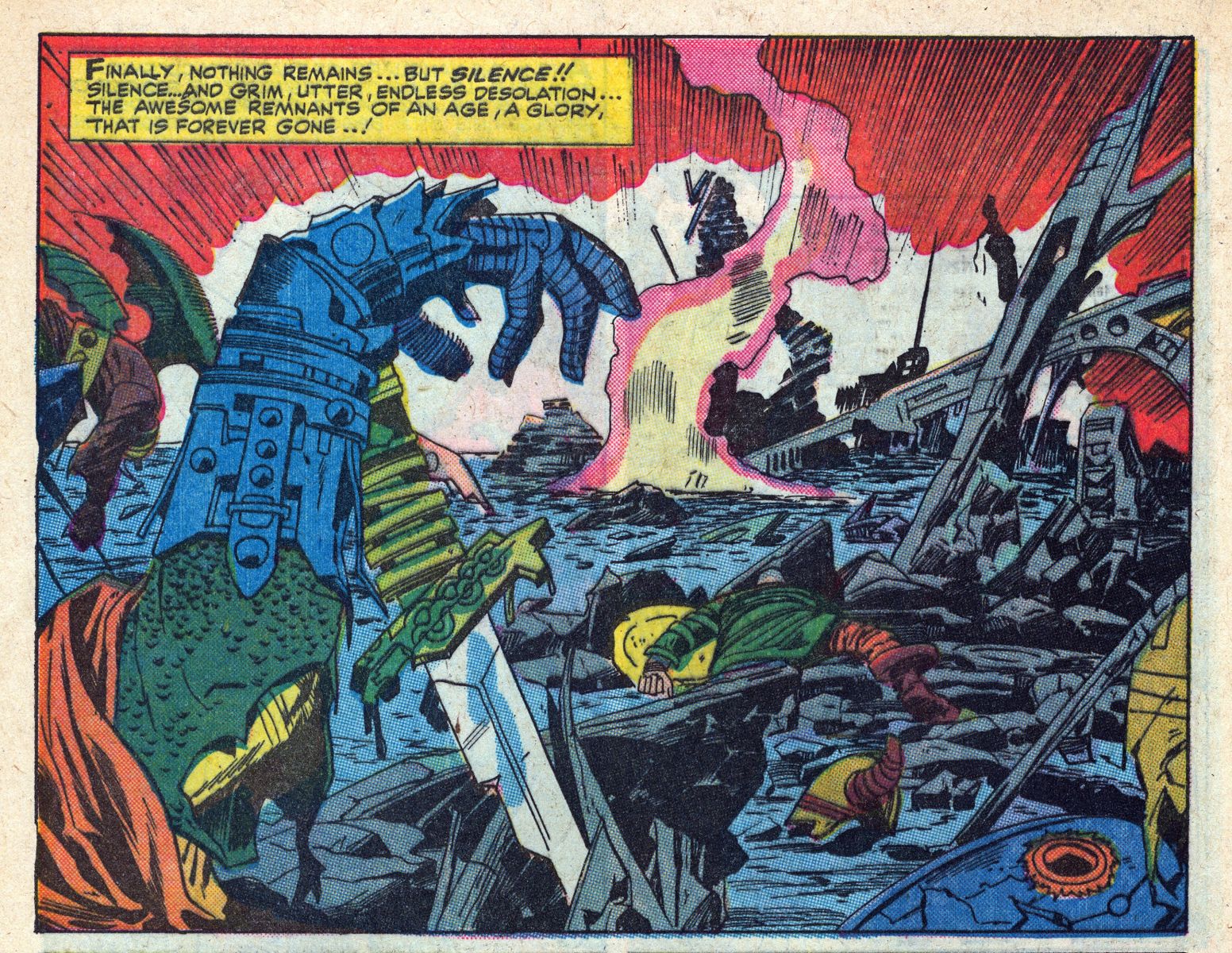



Could there be any two more opposite hats in the Nine Realms that those of the two Odins?
Fantastic article!
in Thor Mighty Avenger, does Thor ever fly with Mjolnir or just his chairrot from issue 5?
and nice article Matt. The New gods is news to me and really does make you think, what if.
Great article; from reading it, I see that the Thor in “Savage Dragon” is a much more accurate portrayal of the Norse God.
Gotta love the prose edda. More power to you Mr. Adler for a great article.
Last Days of the Justice Society of America, which came out in I think 1986, was DC’s answer of what to do with the JSA after Crisis on Infinite Earths. In short, the members of the JSA inhabit the bodies of the Norse Gods and fight the Ragnarok battle. Hawkman was Odin and died when he got eaten by the wolf, Green Lantern was Thor and made a giant green Thor, with hammer and killed the midgard serpent. Great stuff, and oddly more accurate to the real myth than Marvel.
somehow i don’t think a ginger Thor would be seen as quite as big a BAMF
@WeaklyRoll – He does fly with Mjolnir in Thor: TMA, but just short distances. Basically he throw it and it pulls him through the air. He uses the charriot to travel to England with the Warriors Three and to take Jane around the world, but there’s a weird thing about him only being able to make 3 trips with the charriot.
Great article. I am woefully deficient in Norse mythology, so this was quite helpful.
The celestials saga was my favorite comic book raganarok. it even referenced an earlier ragnarok and put forth the idea that the marvel norse gods were not the same norse gods as those worshipped by vikings. Marvel norse was a kind of 2.0 version that began 2000 years ago aftre the first ragnarok. Prior to that the gods were more like their myth counterparts with thor having red hair and a beard, and asgard looked less kirbyesque. This retcon was later deretconned
The Vanir, huh? Me thinks me smells Fraction’s inspiration for his True All Father.
Nice article. You mention the 9 realms, but not Yggdrasil, the world tree, which is a pretty cool concept, and neat that Marvel made it a part of their Thor continuity. Also, the Norse Ragnarok is a bit of a cyclical apocalypse/rebirth story in which most, if not all, of the gods are reborn. Kind of like how Marvel heroes are reborn again and again.
The cyclical nature of Ragnarok is an interpretation by some later scholars, but the original myths don’t make any conclusive reference to it, at least from what I read. Only a few gods survive, and a couple who had died before Ragnarok emerge from Hel. But obviously the cyclical interpretation is useful to Marvel when they want to reboot Thor.
Awesome article! Well done!
I remember reading that whenever Thor was out and about camping/adventuring and whatnot, if he ever got hungry and didn’t have any food. He could slaughter his goats and eat them. The next morning all he had to do was wave Mjolnir over the bones and the goats would spring back to life good as new. He did however have to make sure that he didn’t break any of the bones while he was chowing down or else the goat would come back lame. I think in one story Loki (I believe) snapped a leg bone to get at the marrow and messed up the goat.
Another fine article. If I didn’t just get out of work I would read it all the way through but I’m certainly going to be reading it over this weekend. This is something I’ve been curious about for years.
@EJ it was not Loki it was a child who,s parents had let Thor and Loki stay the night. Thor and Loki were in discise Thor had shared his goats with the family and riquested that the bones be treated with care the next morning when Thor raised his goats and he and Loki made their identatys known the child apoligesd and Thor made him come on there adventure as penince
sorry about my spelling
@RedHawk: Ahhh thank you sir! My memory was a bit faulty.
@EJ it’s all good I love the Norse mythology
in order to injoy Thor in Marvel you first need to acsept that most of the mythology is rong
The Loki mini was great and vary close to the true myths
We studied Norse mythology in a philosophy course I took in college. It was very interesting after being a comics fan for so long. To this day, I still insist that Hel be spelled with one “l” and that is an ice world and not full of fire as Dante would have us believe.
@marshak75 Actually the ninth and final cirlce of Hell where Satan dwells in “The Inferno” is made of ice.
@matt Adler – thank you for sparking some interest in Thor and Norse mythology in me. I am very much in the mood to do some further reading on the subject and definitely check out a lot of marvel Thor titles as well.
As an aside, for an excellent example of the more traditional Thor and Norse gods used in comics, people should check out certain Savage Dragon issues and specifically Savage Dragon: God War miniseries by Kirkman!
This is a great article! I’ve always wanted to know why Thor has no mom. What’s the deal there? In fact, I thought that might be the central plot of Fear Itself.
Great article, Matt!
Don’t forget about how Thor is allowed to walk on Bifrost in the comics, but not in mythology because his footsteps would shatter it. (He is the god of thunder, after all)